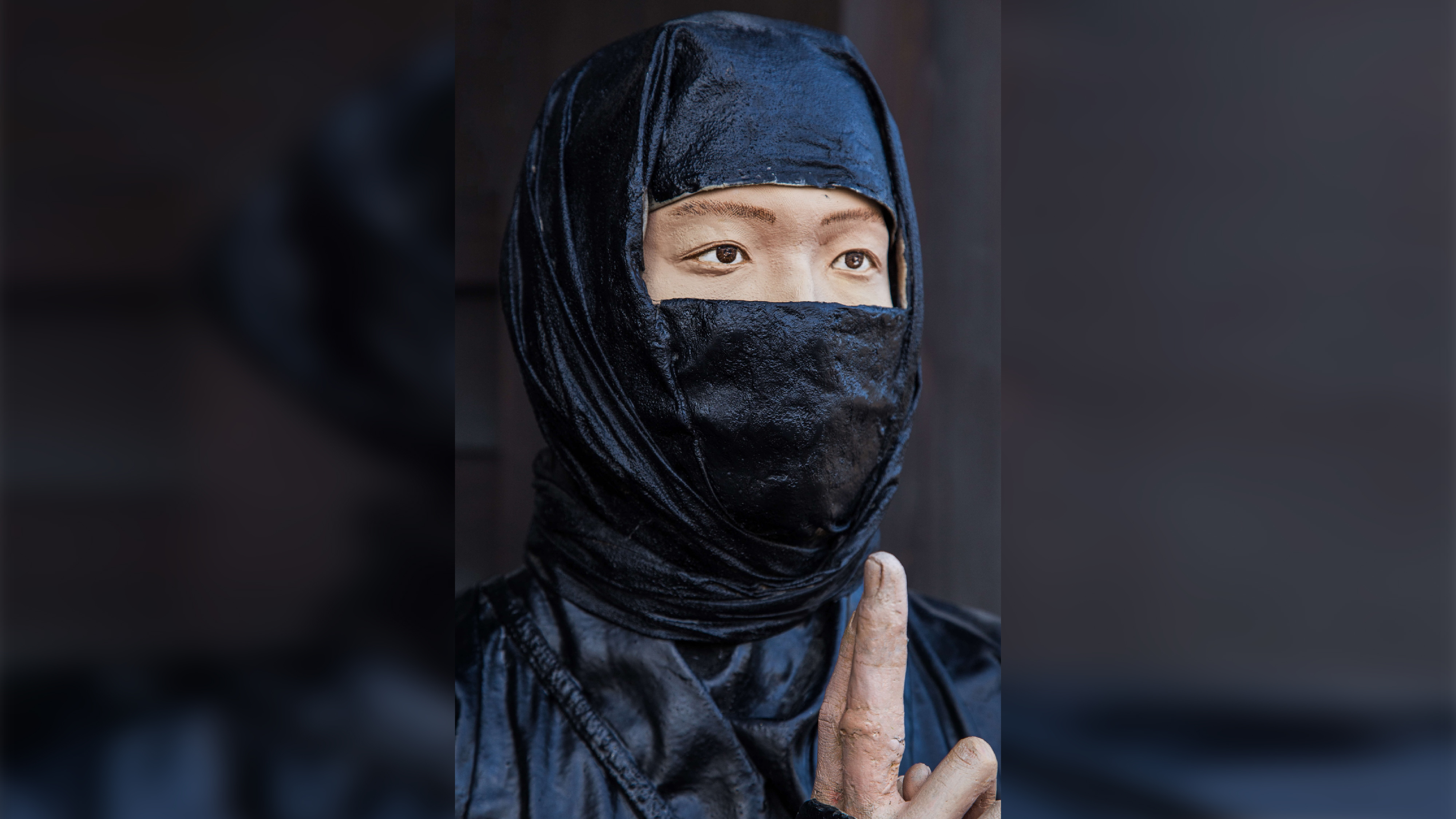For many people, the word “ninja” may bring up an image of a person clad almost entirely in black. But is that what they actually wore?
Live Science contacted experts and examined historical texts to learn how these famous warriors really dressed. Ninjas, also known as shinobi, operated throughout Japan and performed espionage, sabotage and, on rare occasions, assassinations. They also occasionally took part in battles. When exactly they originated is unclear, but ninjas operated in Japan until the late 19th century.
When it came to their wardrobe, ninja wore disguises that made it easier to spy and otherwise blend in with the population, experts said.
“Scouts watching an enemy encampment apparently wore simple peasant or merchant clothing,” said Balázs Szabó, a researcher in the Department of Japanese Studies at Eötvös Loránd University in Hungary. “Spies infiltrating enemy castles had to wear clothing that helped them to merge in with the inhabitants of the castle.”
The all-black uniform that modern-day people imagine ninja wearing comes from puppet theater. “The all-black hooded costume [is] derived from the dress wore by puppet-mover artists in the Japanese puppet theatre” Szabó said.
Related: Did Roman gladiators really fight to the death?
Eric Shahan, a Japanese translator who specializes in translating martial arts texts, agreed that ninja would have worn disguises. “Ninja would most likely wear clothing matching the place they were trying to infiltrate,” Shahan said in an email. “This would include carrying everyday items. Wearing all black would most certainly draw attention.”
If ninja had to fight in a battle, they likely would have worn armor, according to Iwata Akihiro, an archaeologist and curator at the Saitama Prefectural Museum of History and Folklore in Japan. They would have worn “simple armor which is easy to move [in],” Akihiro said.
Straw-hat ninja
“The Shōninki” — a book written by Natori Masazumi, a ninja who lived in the 17th and early 18th century — provided instructions on how ninja should operate. According to the book, ninja need to be able to change disguises as needed.
“The art of the shinobi consists of learning tricks that can be used at critical moments, such as being able to disguise himself as a priest, a wandering monk, a woman, or a girl of the mountains, and, hidden in the night, perform espionage” (translation by Jon E. Graham), Masazumi wrote in the book, whose full title is “Shoninki: The Secret Teachings of the Ninja: The 17th-Century Manual on the Art of Concealment” (Destiny Books, 2010).
Masuzumi suggested disguises that are good for certain tasks. For instance, dressing up as a Buddhist monk is good for getting close to people, dressing up as a merchant is better if you want to freely mingle in a crowd, and a street entertainer is an appropriate disguise if you want to blend into a crowd.
Masazumi recommended that, if possible, a ninja should wear a straw hat — known as an “amigasa” — as part of their disguise. “Thanks to the amigasa it is easy to hide your face and transform your profile,” he wrote. “It is very easy to observe people from underneath your amigasa.” Wearing a cape or raincoat can make it easier to observe people and change disguises quickly without being noticed, he added.
The color of a ninja’s clothes should reflect their surroundings. “The environment can assume the most varied appearances and you should choose the most appropriate color in order to blend with it,” Masazumi wrote. Other suggestions include carrying a piece of cloth that, depending on the situation, can be used as a belt, a headband or a face mask.
“Prepare yourself well by using these different disguises, based on the circumstances,” Masuzumi wrote. “It is essential to know yourself, to study the place where you are staying, and to conceal yourself there with a serene heart.”
